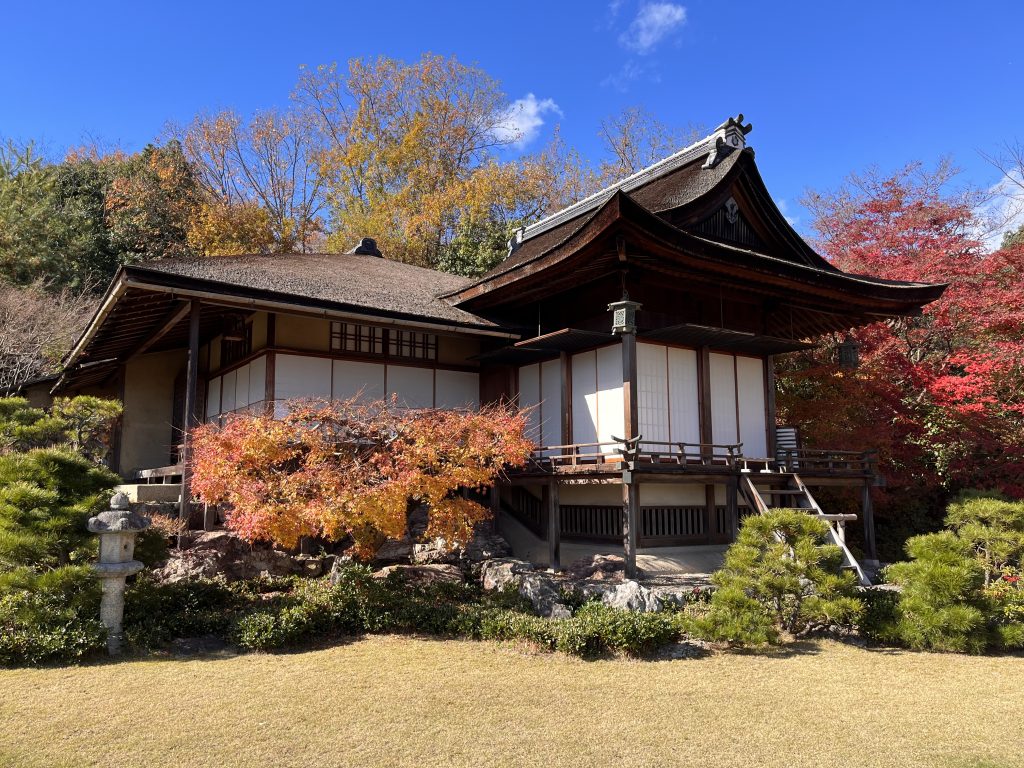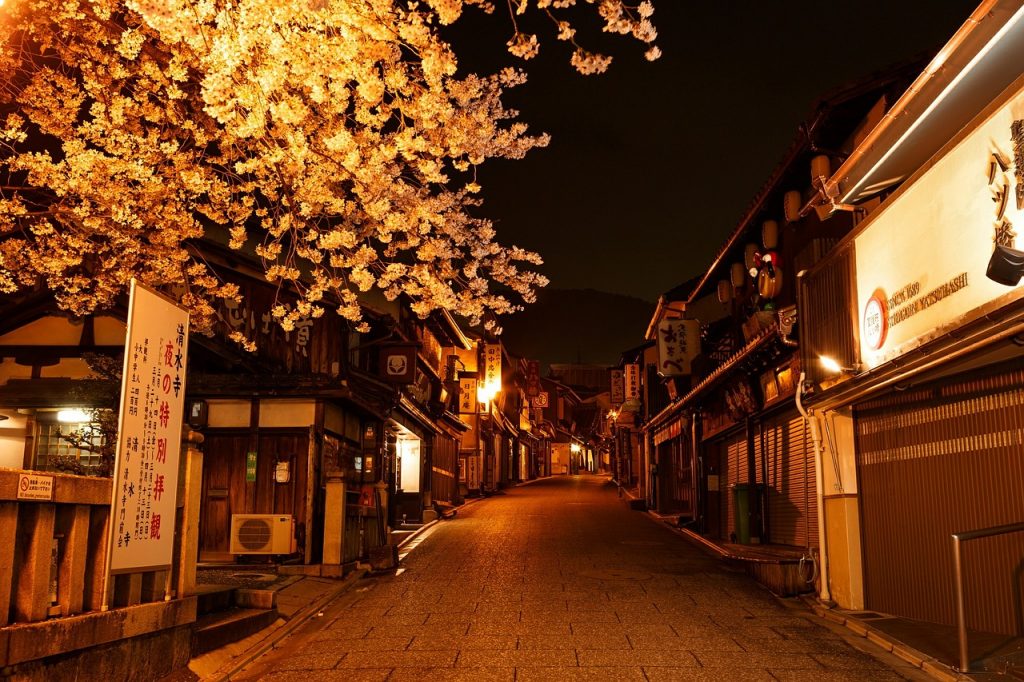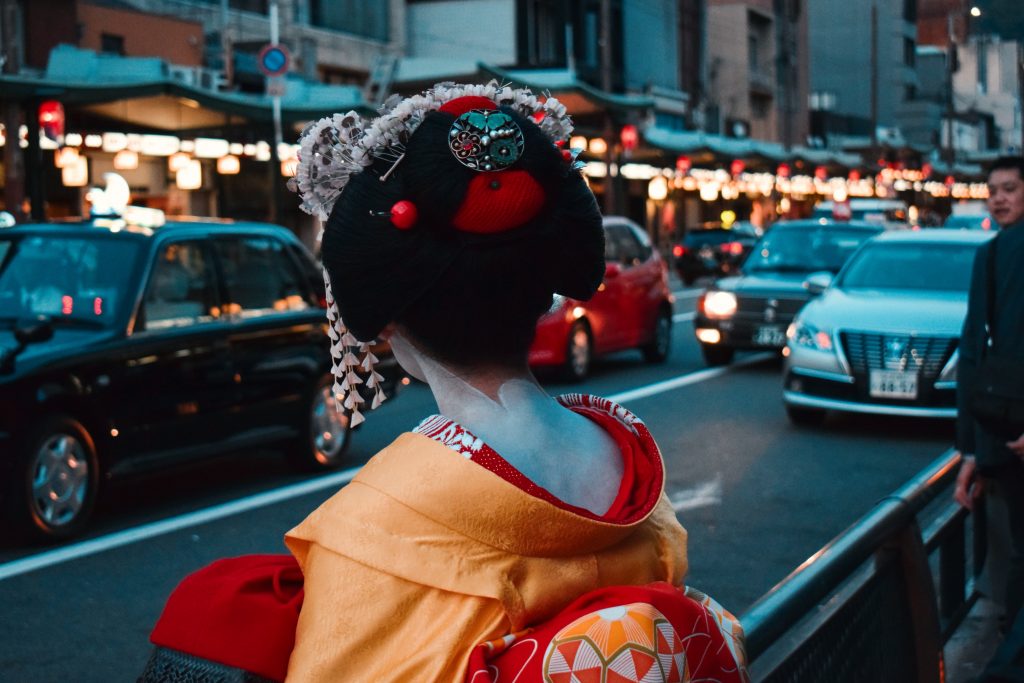This article was published in Downend Voice, Issue 48 for February 2017
After three hours of Shinkansen ride, the train finally pulled into the station. I stepped out of the carriage, and into a new, modern world. This building was no ordinary train station, but a shopping, restaurants and cafes heaven. With over 14 stories full of shops and boutiques, this was by far one of the most impressive and overwhelming train stations I’ve ever had the pleasure to explore.
For a moment, I thought I was mistaken, and I arrived in the wrong city. My intended destination, Kyoto, was supposed to be an old world, where tradition and heritage were the predominant features.
Once Japan’s capital city, Kyoto remains the cultural soul of the country. Kyoto is located on Honshu, Japan’s biggest and most inhabited island. In the heart of the Kansai region, Kyoto is synonymous with good food, geishas and famed shrines.
But the Kyoto I envisioned, was still very much alive, hidden in the old entertainment quarters of Gion, the must visit neighbourhood where one could enjoy a cultural performance or partake in a world class tea ceremony. Just like yin and yang, Kyoto was the perfect combination of old and new, ever changing from one street to another.
A lifetime wouldn’t be enough to explore Kyoto’s narrow alleyways, surrounding mountains or airy central boulevards. There are, however, a few spots, every traveller must experience. In search of spiritual enlightenment, you should explore Mount Inari, home to the Fushimi Inari Taisha. Fushimi Inari is renowned for its multitude of vermilion gates, all donated by individuals and businesses in the hope for good fortune and health. The pilgrimage to the top of Mount Inari is an uphill hike, surrounded by zen, rich Japanese forests. The pathway is dotted with kitsune (foxes) statues, which in Japanese mythology represent God Inari’s messengers.
Kyoto is a place of zen, nicknamed the city of 10000 shrines. On the Western side of the city, a short train ride away, you can find an alien world, made out of tall, bamboo forests. These winding stalks look extravagant and elegant on a windy day, as they suavely rock back and forth, in a graceful dance of their own. The bamboo forests of Arashiayama have long been attracted tourists from all over the world, but it beyond these pathways where one could find Kyoto’s best-kept secrets. Once off the beaten path, Arasiyama’s gems lie within its Japanese landscape gardens, tea houses and mysterious hikes towards forgotten temples, tucked away at the foot of the mountains. Otagi Nenbutsu-ji is one of the greatest little temples in Kyoto, a less visited sacred place, with over 1200 rakan, stone statues representing the disciples of Buddha, all donated by various amateur sculptors around Japan.
Kansai area has been named Japan’s kitchen, and nowhere this is more obvious than in Kyoto’s famed Nishiki market. This is where locals and tourists alike come for fresh produce, readily made exquisite dishes and various souvenirs. It is in Nishiki market where one could try local delicacies such as matcha biscuits, green tea sweets, yakitori (skewers), and takotamago (an octopus with an egg inside its head). If you are still hungry at the end of your tour, head over to Shijo Dori, one of Kyoto’s best-known streets, lined with shops offering some of the world’s best foods. Here, everyone can sample various mochis, delicious rice cakes and plum teas or pickles.
Spared from the second world war bombings, Kyoto managed to preserve its traditional appearance, being a sought after destination by photographers who wish to capture Japan’s old look, with wooden houses, mini zen gardens and impressive Shinto shrines. Being strategically located, Kyoto is the perfect gateway not just to its surrounding mountains, but to nearby, exciting cities. Mount Hiei is one of the greatest options for those in need of a hike. Not only because of the blissful silence to experience deep in the Japanese forested mountains but because on the way to the trail, you can experience a very cool cable car ride. The Sakamoto Cable Railway is categorised as an “inclined cliff (funicular)” railway, in which the cable car is pulled up a mountain using cable.
For culture lovers, a short trip to the Himeji Castle will act as a great window into Japan’s olden days, during which the Samurai became the highest ranking social caste of the Edo Period. The city of Hiroshima is a great reminder of how humanity has the power to destroy, but also to create, as this city rose like a phoenix from its own ashes.
As a vehement tea lover, I can’t help but recommend what I consider to be an incredible day trip from Kyoto: the small town of Uji, considered to be the birthplace of tea in Japan. Legend has it that a monk called Eisai brought tea seeds from China and gave them to priest Myoe Shonin, who planted some of them in Uji. Needless to say that Uji has a flourishing tea plantation industry and the best place in the world to enjoy a ceremonial grade matcha. From Uji, continue the journey further out, towards Nara, a magical place where semi-tamed deer roam freely around the city. It is also home to the Tōdai-ji, a Buddhist temple complex, that was once one of the powerful Seven Great Temples.
Although surprisingly modern in parts, Kyoto didn’t disappoint but reiterated how creative the people of Japan can be. Instead of settling for the old ways, they are a fantastic nation which shows us the importance of adaptation and preservation, whilst embracing and incorporating traditions into their modern life. For those who wish to relive the Memoires of a Geisha in a modern time, where arts, cultures and good food prevail, Kyoto is most certainly the obvious choice.









Leave a Reply